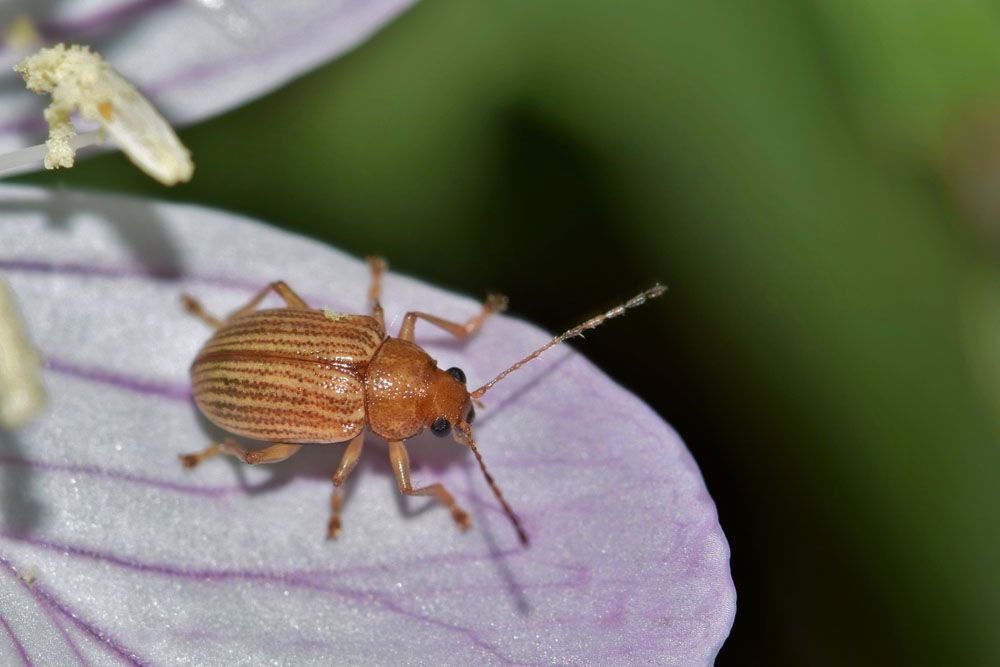
Grape colaspis – Colaspos brunnea
Grape colaspis – Colaspos brunnea
Common Name: Grape Colaspis
Latin Name: Colaspis brunnea
Appearance: The adult Grape Colaspis is a small, shiny, oval-shaped beetle approximately 3-4 mm in length. Its body is dark brown or black and has a distinctive, slightly curved snout.
Eggs: The female Grape Colaspis lays small, white, oval-shaped eggs in the soil near the roots of the host plants.
Pupae: The pupa of the Grape Colaspis is white or yellow and can be found in the soil.
Larvae: The Grape Colaspis larvae are small, white, and C-shaped. They feed on the roots of the host plants and can cause significant damage.
Adults: Adult Grape Colaspis beetles feed on the leaves of their host plants and can be found from late spring to early fall.
Host plants: The Grape Colaspis feeds on a wide variety of plants, including grapes, soybeans, corn, and other crops.
Territory: The Grape Colaspis is found in the eastern and central United States.
Damages caused by Grape Colaspis: The Grape Colaspis can cause damage to the roots of its host plants, resulting in reduced growth, wilting, and even plant death. In severe cases, the damage can lead to a significant reduction in crop yield.
Life history and habitat: The Grape Colaspis overwinters as a larva in the soil and pupates in the spring. The adult beetles emerge in the summer and feed on the leaves of the host plants. The females lay their eggs in the soil near the roots of the host plants, and the larvae hatch and feed on the seeds throughout the growing season. The Grape Colaspis can be found in various habitats, including agricultural fields, gardens, and natural areas.
